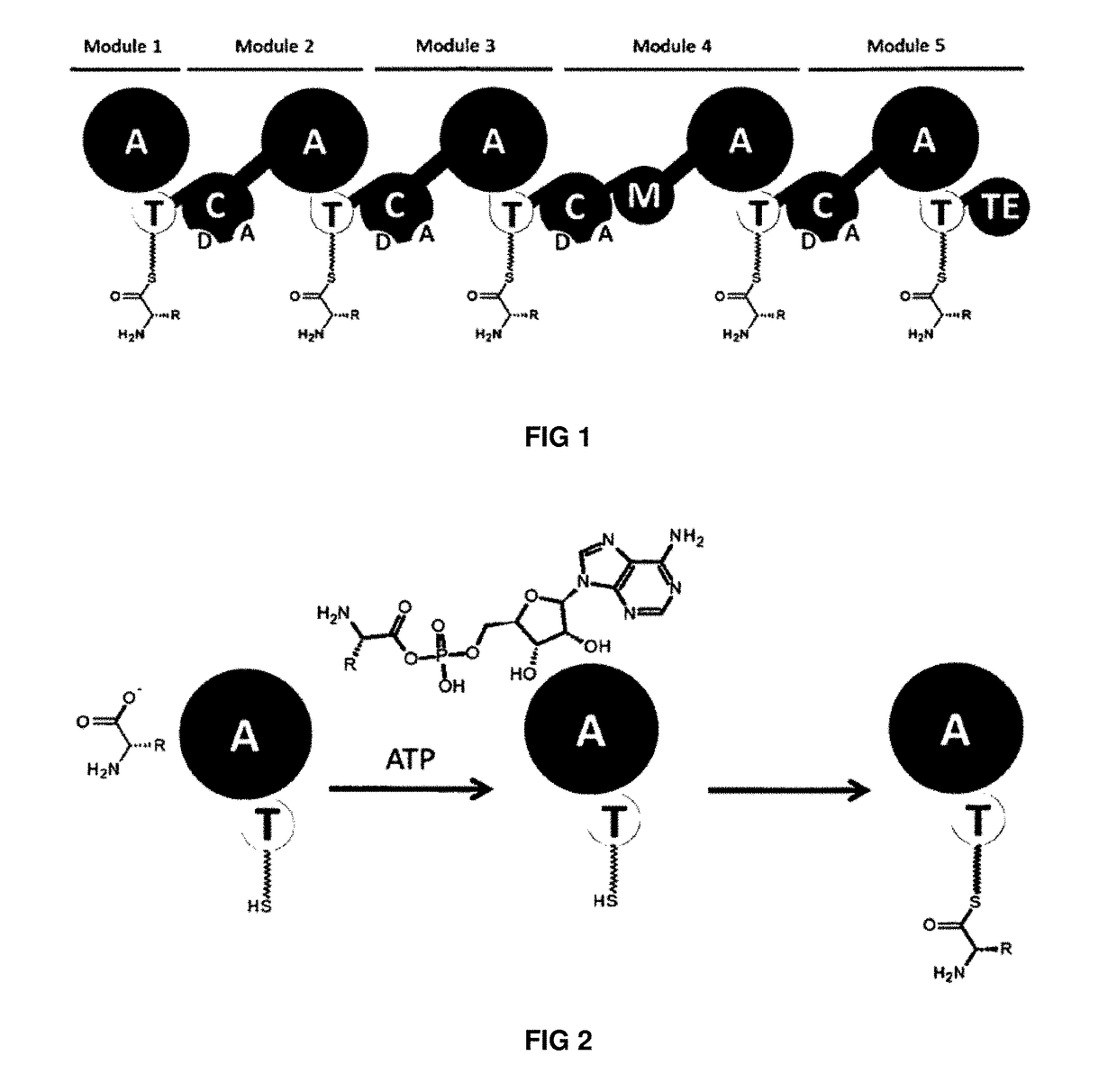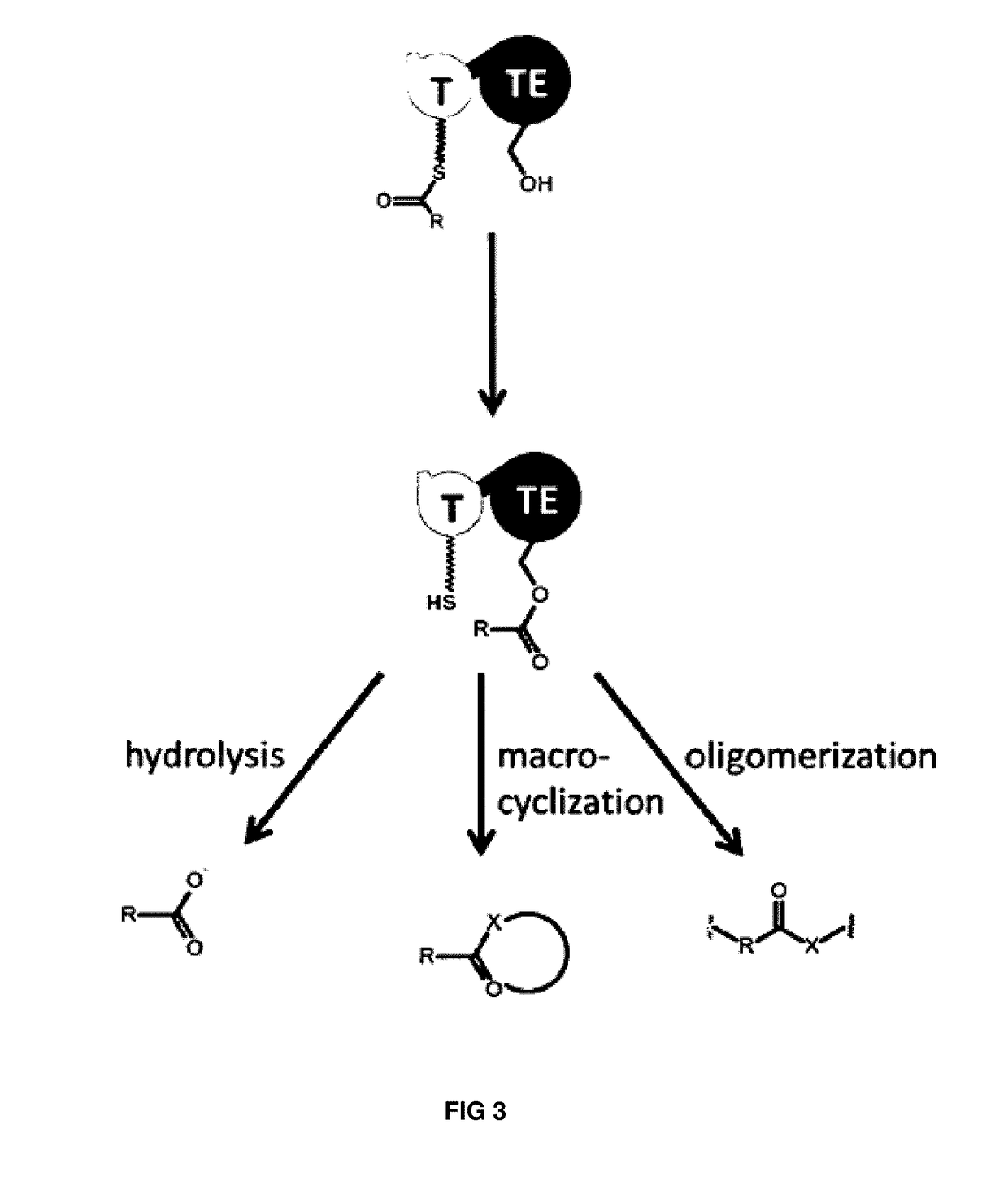Artificial non-ribosomal peptide synthetases
a technology of ribosomal peptides and synthetases, which is applied in the field of artificial non-ribosomal peptide synthetases, can solve the problems of substrate incompatibilities, inability to produce totally artificial nrpss from artificial de novo combination of modules, and inability to carry out in vivo application
- Summary
- Abstract
- Description
- Claims
- Application Information
AI Technical Summary
Benefits of technology
Problems solved by technology
Method used
Image
Examples
example 1
n of the Present Invention (Concept of EUs) and the German Patent Application No. 1999151196
[0054]To compare the present invention with the status quo method, the following experiment was performed. In this experiment we tried to swap several 25 domains (yellow) in the Ambactin producing NRPS AmbS to produce a new Ambactin derivative (FIG. 5): on the one hand according to the concept of EUs FIG. 5D and on the other hand according to the state of the art method FIG. 5C suggested by Marahiel et al. (WO200130985). Only the present invention led to the desired cyclic peptide. The other recombinant NRPS FIG. 5C showed no production of any new derivatives.
example 2
ssembly of the NRPS Biosynthesis Cluster Plu3263 (GxpS) Responsible for the GameXPeptide Synthesis
[0055]To support the accuracy of our invention we reassembled the GameXPeptide producing NRPS from known NRPS building blocks. As predicted this artificial NRPS is able to produce the desired peptide (FIG. 6).
example 3
ssembly of the NRPS Biosynthesis Cluster XtpS Responsible for the Xenotetrapeptide Synthesis and Production of a Threonine Containing Derivative
[0056]To support the accuracy of our invention and its application to construct new and artificial NRPS producing novel peptides (De novo construction of XtpS FIG. 7, artificial NRPS FIG. 8).
PUM
| Property | Measurement | Unit |
|---|---|---|
| canonical elongation module | aaaaa | aaaaa |
| chemical structures | aaaaa | aaaaa |
| quarternary structure | aaaaa | aaaaa |
Abstract
Description
Claims
Application Information
 Login to View More
Login to View More - R&D
- Intellectual Property
- Life Sciences
- Materials
- Tech Scout
- Unparalleled Data Quality
- Higher Quality Content
- 60% Fewer Hallucinations
Browse by: Latest US Patents, China's latest patents, Technical Efficacy Thesaurus, Application Domain, Technology Topic, Popular Technical Reports.
© 2025 PatSnap. All rights reserved.Legal|Privacy policy|Modern Slavery Act Transparency Statement|Sitemap|About US| Contact US: help@patsnap.com



